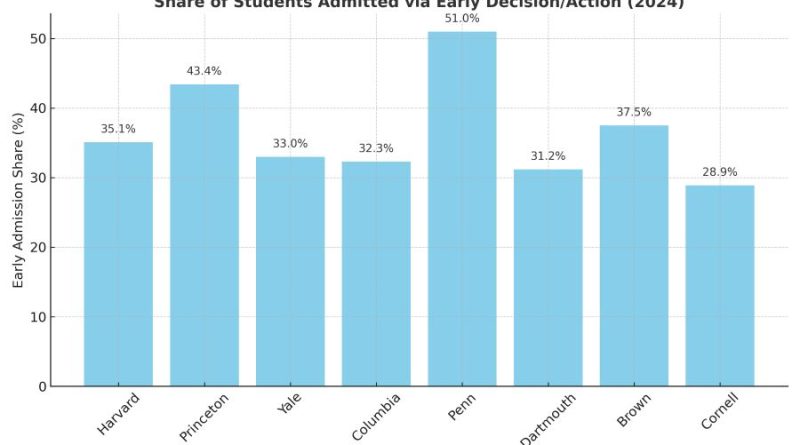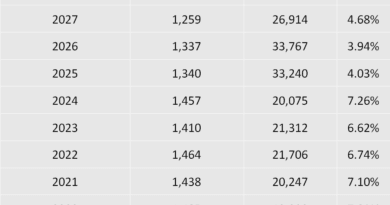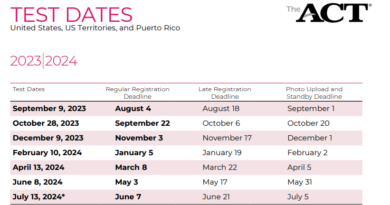Why Applying Early Can Maximize Your Chances at Top U.S. Universities
If you want to secure admission to a top university in the United States, here’s the trick: apply early through early admissions. Whether it’s Early Action (EA) or Early Decision (ED), applying before the regular deadline has become one of the most effective strategies to improve your chances of getting into elite schools such as Harvard, Yale, Princeton, MIT, or Stanford. For ambitious students targeting Ivy League and other highly selective institutions, understanding the early admission landscape is no longer optional—it is essential.
What Is Early Admission?
Early admission programs allow students to submit their applications ahead of the regular deadlines—typically by early to mid-November of senior year—and receive decisions as early as December or January. This process gives students and universities clarity much sooner than the standard admission cycle.
There are three main formats of early admission that students must carefully distinguish:
- Early Decision (ED): A binding option where accepted students are obligated to attend. This commitment makes ED the most powerful way to demonstrate genuine interest in a university.
- Early Action (EA): A non-binding option where students get their results early but still have until May 1 to decide. This gives applicants more flexibility to compare offers and aid packages.
- Restrictive Early Action (REA): A hybrid approach used by schools such as Harvard, Yale, and Stanford. It is non-binding, but it prevents students from applying early to multiple private universities.
By choosing the right early pathway, applicants can tailor their strategy to match their academic readiness, financial needs, and level of certainty about their first-choice school.
Why Early Admission Increases Your Chances
Multiple years of admissions data from the Common Data Set and institutional reporting confirm that early admission rates are significantly higher than regular decision rates. In many cases, early applicants enjoy acceptance odds two to three times higher. At Ivy League schools, 40% to 70% of the freshman class is now admitted through early programs, leaving fewer spots available in the regular cycle.
The reasons behind these higher odds are straightforward:
- Demonstrated Interest: Submitting early signals genuine commitment. Colleges know that students who apply early are more likely to enroll if admitted.
- Smaller Applicant Pool: The early round attracts fewer applicants compared to the massive wave in regular decision. That means less competition per seat.
- Academic Readiness: Students who are prepared by November tend to have stronger grades, test scores, and recommendations, raising the overall quality of the early pool.
- Institutional Priorities: Universities secure high-performing students early, shape their incoming class profile faster, and lock in top athletes, legacies, and priority applicants.
Benefits for Students
The advantages for students who apply early are wide-ranging and tangible:
- Higher Acceptance Chances: At schools like Middlebury, Tulane, and Grinnell, more than 65% of the incoming class is now admitted through early decision. Among the Ivy League, early programs account for 30–50% of the freshman seats.
- Less Stress Later: Students who receive early offers in December can enjoy the remainder of senior year without juggling multiple applications and uncertainty.
- Better Planning: Early admission results give clarity on financial aid, housing, and long-term academic planning. This helps families prepare without the stress of last-minute surprises.
- Confidence and Focus: Applying early demonstrates that a student is organized, decisive, and committed—qualities admissions officers value highly.
The Rise of Early Admission
The early admission system has expanded dramatically over the past decade.
Take Duke University, for example. More than half of its incoming class is now admitted through early decision. This approach allows Duke—and many of its peer institutions—to lock in talented students months before the traditional May 1 national deadline.
It’s not just Duke. Eighty-four selective universities and colleges now admit at least a third of their students through early decision, and 55 of those schools have further increased their early decision intake in recent years, according to Education Reform Now.
The growth has been especially striking at certain schools:
- Tulane University: From 28% ED admits in 2018 to 67% in 2024.
- Grinnell College: From 44% in 2018 to 68% in 2024.
- Middlebury College: From 58% in 2018 to 69% in 2024.
These figures reveal a clear trend: universities are relying more heavily on early decision to shape their classes, and students who wait for regular decision face tougher odds.
Why Students Choose Early Admission
Students who apply early tend to do so for three main reasons:
- Higher Acceptance Rates: The statistical edge of early applications is undeniable, often doubling or tripling the chance of success.
- Demonstrated Commitment: Early decision applicants show schools they are willing to commit fully, which colleges reward with higher admit rates.
- Peace of Mind: For many students, learning their status in December rather than March removes months of uncertainty and stress.
Universities also benefit. Early admissions improve yield rates, reduce uncertainty in enrollment numbers, and allow admissions offices to shape the incoming class profile in advance.
The Equity Challenge
Despite its advantages, the early admission system has come under scrutiny for equity issues.
- Financial Constraints: Binding early decision can be risky for students from lower-income families because it limits the ability to compare financial aid packages.
- Access Gaps: Well-resourced students—those with private counseling, test prep, and strong early planning—are more likely to be ready by November.
- Psychological Barriers: According to David Clinedinst of the National Association for College Admission Counseling (NACAC), the perception that admissions are impossibly competitive can discourage some students from applying altogether.
This means that while early programs offer a significant advantage for some, they may unintentionally reinforce inequities in the admissions process.
Ivy League and Top University Trends
The Ivy League and other top universities have leaned heavily on early admissions to shape their incoming classes. Here is how each school has structured its early share in recent years:
Harvard University
For the Class of 2028, Harvard admitted 692 students through restrictive early action (REA) out of 1,970 total admits—roughly 35% of the class. Harvard consistently fills more than a third of its class by December, leaving fewer opportunities in the regular round. Harvard official stats
Princeton University
Princeton admitted 791 students early for the Class of 2024, making up 43% of total admits. Using single-choice early action (SCEA), Princeton secures top talent while still allowing students to compare financial aid offers. Princeton Admission Stats
Yale University
Yale admitted 709 students early in the Class of 2028, representing 33% of admits. Its restrictive early action program is consistently competitive, and well-prepared early applicants enjoy stronger odds than in the regular cycle. Yale Stats are here
Columbia University
Columbia admitted approximately 750 students via early decision for the Class of 2028, around 32% of the total admits. Columbia has steadily expanded its reliance on ED, mirroring a broader Ivy League trend.
University of Pennsylvania (UPenn)
Penn is one of the most aggressive Ivies in this area. For the Class of 2029, 51% of the freshman class was admitted through early decision. This means more than half of Penn’s seats are filled by December, leaving significantly fewer available in regular decision.
Dartmouth College
Dartmouth admitted 526 ED students for the Class of 2028, accounting for 31% of admits. More strikingly, 49% of its enrolled class came through early decision, showing how central ED has become in its enrollment strategy.
Brown University
Brown admitted 907 students via early decision for the Class of 2029, representing 37.5% of total admits. With more than a third of its class admitted early, Brown underscores the competitive advantage of applying in the ED pool.
Cornell University
For the Class of 2024, Cornell admitted 1,594 ED students—28.9% of the total admits. While its early share is somewhat lower than peers, Cornell has steadily increased reliance on ED in recent years.
Ivy League Early Admission Data
| School | Cycle / Source | Early Admits | Total Admitted | Early as % of Total Admitted |
| Harvard | Class of 2028 | 692 | 1,970 | 35.1% |
| Princeton | Class of 2024 | 791 | 1,823 | 43.4% |
| Yale | Class of 2028 | 709 | 2,146 | 33.0% |
| Columbia | Class of 2028 | ~750 | 2,319 | 32.3% |
| Penn (UPenn) | Class of 2029 | — | — | ~51% via ED |
| Dartmouth | Class of 2028 | 526 | 1,685 | 31.2% (49% of enrolled) |
| Brown | Class of 2029 | 907 | 2,418 | 37.5% |
| Cornell | Class of 2024 | 1,594 | 5,514 | 28.9% |
The Takeaway for Applicants
The evidence is overwhelming: if you want to maximize your chances at an Ivy League or other top university, apply early. At many schools, half the class is chosen before the regular decision pool is even reviewed.
However, families must carefully weigh the trade-offs. Early decision locks students into a commitment that may not be financially feasible, while early action offers more flexibility. For students who are academically ready and confident in their top choice, early admission can be the difference between rejection and acceptance.
In today’s admissions environment, the lesson is clear: the early applicant doesn’t just get noticed—they often get admitted.



